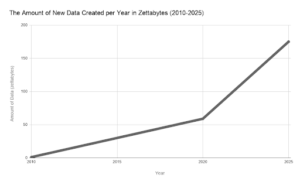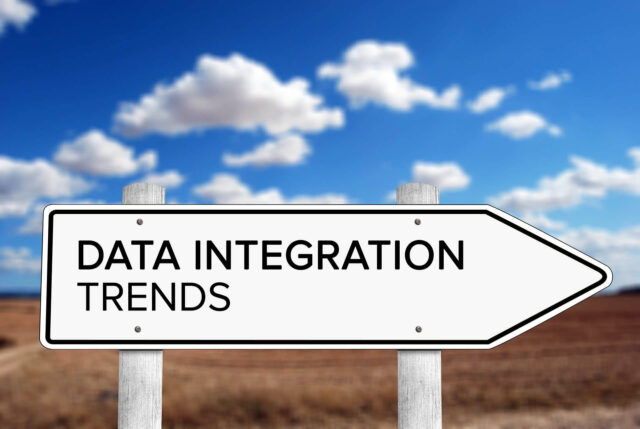5 Emerging Data & Enterprise Integration Trends
What is in the data and enterprise integration store?
So a couple of months of the New Year are gone. Let us talk about, the trends and challenges in the world of data and enterprise integration that organizations may face in 2022.
1) Explosive Data Growth:
We are living in times, where nearly everything records and stores data. With more specific business-related systems and sensors; more data is created every year. This exponential data growth is presenting exceptional organizational challenges for distilling and processing the data for decision-making.

Quality of data and better decisions:
Data quality is one of the major challenges faced by organizations in 2022. Since data is growing exponentially, determining and ensuring data quality becomes more difficult.
What is the definition of data quality?
It is the measure of accuracy, reliability, completeness, and suitability of the data; according to the purpose it has to serve.
Every organization works on improving data quality. It ultimately ensures better decision-making. Two of the most renowned workflows are as follows:
- To check the data as soon as it enters the system and make sure that it meets all the data quality standards. This also assures that new data is not lowering the data quality.
- To run the tasks to enhance the quality of existing data. The process particularly includes identifying and processing the duplications, looking for the missing fields, and validating the types of data.
With always increasing data, the systems should not only be highly efficient but scalable too.
Efficiency and Scalability = Fast Decisions
Regardless of the task, the faster it is done; the bigger advantage an organization will have over its competitor, and an opportunity to serve its customers better.
2) Spatial Data Growth:
The significance of spatial data across all business sectors seems to continue to be at a growing end. The prediction of the growth of spatial data in ubiquity is based on the following:
- Augmented reality: Augmented Reality (AR) though in infancy; continues to gain traction. New handsets based on the underlying technologies from Google and Apple are continuously improving the native support for their users. Organizations need to pull together various types of spatial data i.e. lidar, imagery, 3D models, etc.; to represent 3D buildings realistically. Hence, Augmented Reality cannot work with technology that does not understand spatial data. AR is a true and practical example of next-generation technology, lowering the cognitive load of the workforce. Rather it makes arduous tasks easier, simple, and fun e.g. locating the underground infrastructure. Here is an example of making things easier with AR.
- Enterprise solutions: Enterprise solutions these days are built-in spatial data support. It gives a competitive edge to an organization over competitors. In 2022, more companies expect to turn to spatial data.
- Enterprise integration: Whenever companies embrace new technology, their decisions are based on the foreseen future. Therefore, enterprise integration expects to support spatial data. This missing element of spatial data support largely influences organizational decisions and it seems to grow in the future.
It can be said that understanding and significance of spatial data is a competitive advantage for an organization. More and more companies will be switching to comprehensive spatial data support; from other data quality and data integration tools in 2022.
3) Agile enterprise integration:
Agile enterprise integration serves several workflows which are as follows:
- Connecting the applications: Organizations today, derive their decisions based on the information accessed via multiple systems. This puts more than the expected load on the system when connected applications are busy.
- Data processing on schedule: This may be any data workflow to transfer the data between the systems or to generate reports. This kind of data workflow is well controlled and allows the users to avoid the busy time when they are running.
- On-Demand data and decision making: This type of workflow allows the decision makers to request the required data whenever there is a need. In this case, systems face load only when the data needs for decision-making.
- Real-time data streaming: With the ever-growing adoption of IoT and 5G, more solutions based on real-time data builds. It enables improved efficiency and customer experience, as well as reduced cost. Real-time decision driven by real-time data is critical for businesses. Being aware of real-time situations ensures that resources deploy exactly where they are needed and will create the required impact.
“Time to take a decision” is a competitive advantage. Over some time, demands on organizational systems vary. For instance, in stated workflows i.e. connecting the applications, on-demand data, and real-time data streaming; the load cannot be predicted. Therefore, the deployment should be agile to adapt to the load changes quickly.
Traditional models where organizations invest in “maximum processing ability” is now replaced with the latest approach where now organizations buy “work that is done”. It allows organizations to adjust to the changing loads easily and meet their customers’ expectations.
Here again, purchasing the “work that is done”; is cost-effective. On the other hand, it enhances the value across the organizational decision-making capabilities. In short, it is about delivering the right information; how, where, and when it is required.
4) Hybrid Solution Deployment:
This was a trend of 2021 and seems to continue in 2022. Organizations need solutions that deploy both on the premises and in the cloud. The world is in this Hybrid Mode. Hence enterprise integration solutions, running efficiently on the cloud and the premises provide the organizational flexibility required for expected performance.
5) Gravitation and ARM:
Infrastructure cost in the cloud grows with the growth in deployment. The focus of the Gravitation processor is to provide a higher ratio of performance/cost. With the introduction of Gravitation 3, the efficiencies of the said processor are more compelling than before. It may consider ahead of the trend but it will not be long before we will see organizations deploying on ARM.
Final Verdict: So there you go, you now know the emerging data and enterprise integration trends. Also, you have seen the 2021 trends which seem to continue growing in 2022. Above all, the world of data will be at an accelerating pace where spatial data will be gaining ubiquity significance. Therefore, organizations need to ensure that they get full value from the accessed data.



![Introduction to ASP.Net: Gateway to the professional web development [Part 1]](https://alliedc.com/wp-content/uploads/2015/08/ASP-Net-150x150.jpg)


